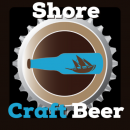This is Part one of a two-part story
Eastern Shore Brewing in St. Michaels got a bad rap when it first opened nearly a decade ago because it had some inconsistency issues. Owner Ace Moritz solved that problem by going back to the drawing board, knocking off the fancy stuff and cranking out a couple of true-to-style beers. He got successful pretty quickly after that.
True to style beers meet pretty specific guidelines set up by the Beer Judge Certification Program (BJCP). They are arbitrary measures of what a specific beer should taste like as a barometer for removing a lot of aesthetic conflicts from the judging process.
Many, if not most, homebrewers start off making true to style beers, not because they are much easier, but rather because while you’re learning to make beer, it is easiest to make a beer with defined guidelines so you can tell how well you’re doing. It’s about shoring up the ability to reproduce a beer consistently.
By the time a person goes from homebrewing to professional brewing, many have been done making true to style beers for fun for a long time. A lot also have been to brewing school wherein they’ve been drilled in the basics. During the last decade, opening a brewery has provided avid brewers a little showing off room, and they have taken advantage of it. Jesse Prall, who expects to open Rubber Soul Brewery in Salisbury in May has a different perspective: What ever happened to true to style beers?
An off-centered education
A decade of off-centered brewing does things to a person.
Prall didn’t start off as a homebrewer; he started off as a busboy at the Appalachian Brewing Company restaurant
near where he grew up in Harrisburg, Pa. Brewing looked like a lot more fun than slogging dishes around, so he found himself increasingly helping out in the back of the house washing kegs instead of plates. It didn’t take long for him to make the transition to brewing, go to school and become a brewer. By the time he was ready to move on, he was qualified enough to choose his destination. Ten years ago, an open spot at Dogfish Head appealed to him and he applied for and was hired on as a brewer there.
It would be nearly inaccurate to say that there was too much awesome working at Dogfish, but the impression Prall gives is that it was damn close. Dogfish Head might be the largest home brewery on the planet. Weekly tastings of new beers he or his colleagues were developing, scaling up recipes and procuring ingredients in quantities to make massive batches, all were part of Prall’s regular week.
As cellar supervisor and then a brewery supervisor dealing with hiring brewers sometimes could be challenging. Sometimes he could tell by how excited a person was that they didn’t get the point. Brewing at Dogfish Head wasn’t only being off-centered; sometimes it meant brewing nothing but 60 Minute IPA hours and days on end, depending upon how the shifts fell (Dogfish Head has three shifts). Brewers had to be excellent, professional and OK with the mundanity of shift work. Prall was good at hiring brewers, and eventually he became involved in production, planning out what to brew and when.
Negotiating with Dogfish Head salespeople over volume and delivery dates was an education in itself, just as was procuring the volume of off-centered ingredients it requires to make Dogfish Head. All during the rise of craft beer, and especially over the last few years, Prall received requests and offers to strike out on his own. For him, it wasn’t that he didn’t feel ready, but rather that he didn’t feel right.
Think for yourself
Whenever you do something creative professionally for long enough, you get a sense of what is an idea and what is potentially an idea. Prall’s vision for what eventually would become Rubber Soul was too nascent when the first offers and opportunities presented themselves, and he knew it.
For the first time in his lifetime, opening a craft brewery required a strict plan and a particular vision. There are established standards and public perceptions to be considered in a way that hasn’t been present before. Moreover, there’s a qualitative attitude to be considered: What are Eastern Shore Beers?
Last year, it all came together. Prall solidified the vision and cultural emphasis for a new brewery. He was approached by people who were comfortable with his vision and understood the nature of the new craft beer enough to give him the kind of free hand he felt he needed to start the next chapter in the region’s beer history.




